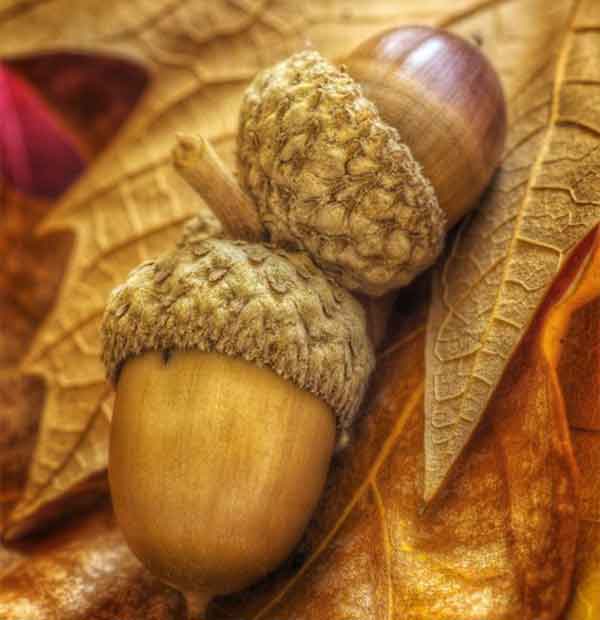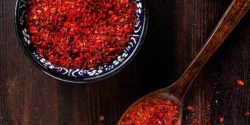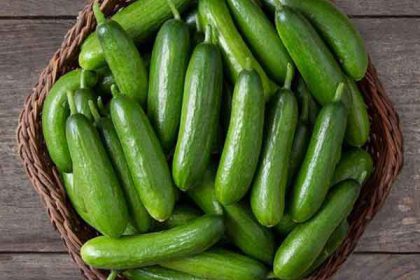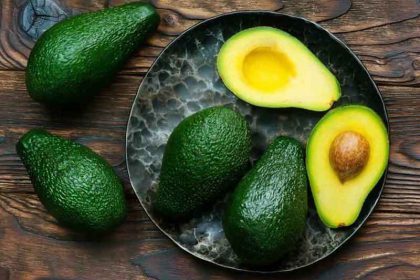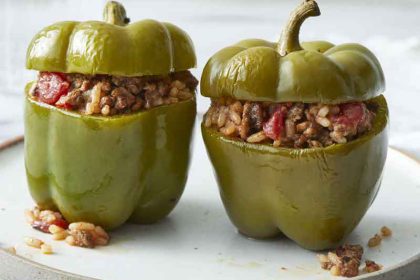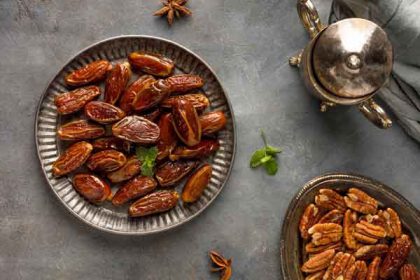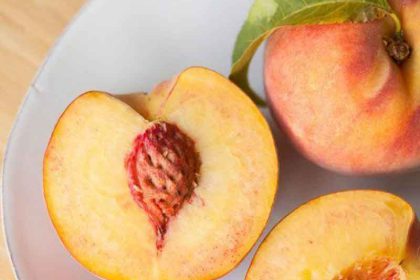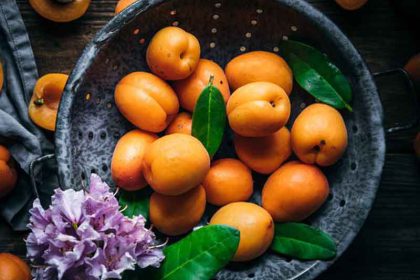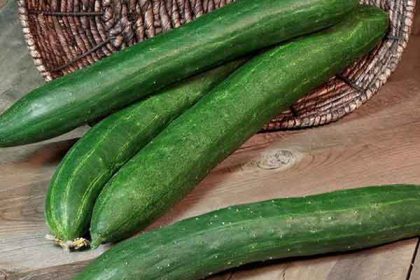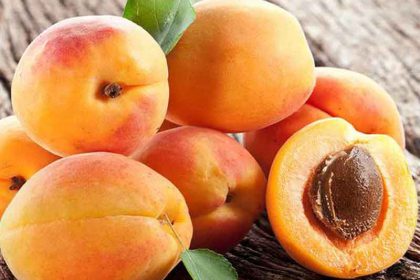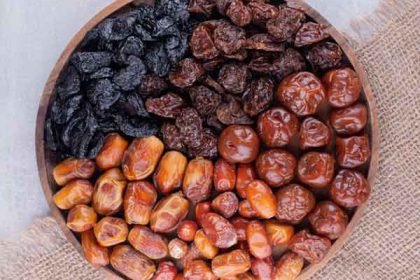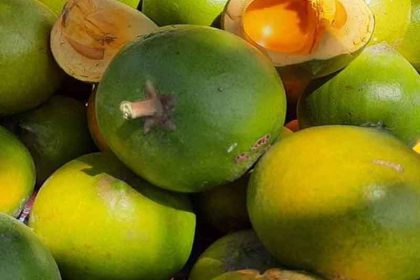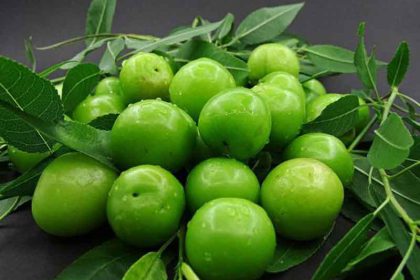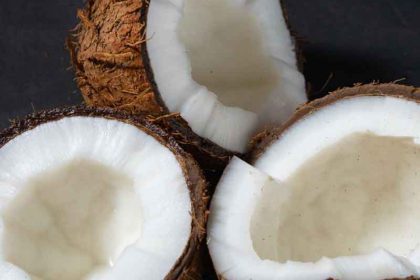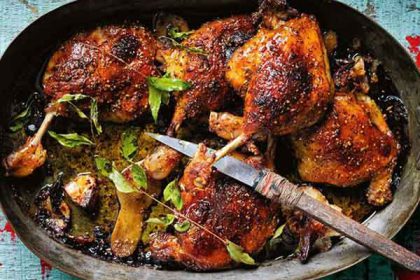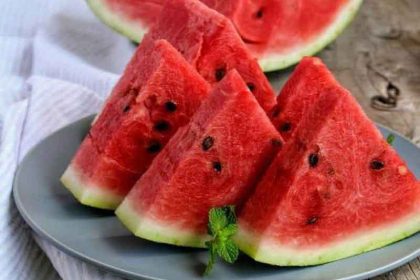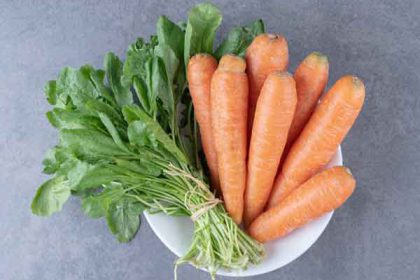Acorn benefits for humans and skin and acorn tea benefits
Acorn
Acorn benefits for humans and skin and acorn tea benefits on Nicholi site. We hope this article will be of interest to you.
Acorns are considered nut fruits or true nuts that develop from the oak tree. While raw acorns are edible, they contain bitter tannins that need to be removed through a process called leaching. Leaching involves soaking, boiling, or grinding the acorns and rinsing them with water multiple times. This process helps make acorns safe and palatable for consumption. After leaching, acorns can be used to make flour or incorporated into various dishes. Acorn tannins have been used in tanning, dyeing, ink production, wood treatment, and traditional medicine. To eat acorns, gather fresh ones, remove the shells, leach out the bitterness, dry them, grind or chop them, and use them in recipes.
Is an acorn a nut or a fruit?
An acorn is considered a nut, specifically the nut of an oak tree. It is a type of seed that develops within the protective outer shell, called the acorn cup or cupule. While acorns are commonly referred to as nuts, they are technically classified as a type of fruit called a “nut fruit” or “true nut.” This is because they possess a tough outer shell and are derived from a single ovary, characteristics typical of nuts.
Can humans eat acorns raw?
While acorns are edible, they generally require processing before they can be consumed by humans. Raw acorns contain tannins, which are bitter and can be harmful if consumed in large quantities. Tannins can cause digestive issues and interfere with nutrient absorption.
To make acorns suitable for consumption, they need to be leached or processed to remove the tannins. This typically involves a process of soaking, boiling, or grinding the acorns and then repeatedly rinsing them with water to remove the bitter compounds. Leaching can be a time-consuming process, requiring several changes of water over the course of several days to remove the tannins adequately.
After the leaching process, acorns can be used to make flour or incorporated into various dishes such as bread, soups, or stews. It’s important to note that even after proper processing, some individuals may still be sensitive to acorns or have allergies, so caution is advised when consuming them.
Are acorns edible?
Yes, acorns are edible and have been consumed by humans for centuries. However, as mentioned earlier, raw acorns contain tannins that make them bitter and potentially harmful if consumed in large amounts. Proper processing and leaching are necessary to remove the tannins and make acorns safe for consumption.
After leaching, acorns can be ground into flour or used as an ingredient in various dishes. Acorn flour has been traditionally used in some cultures as a substitute for regular flour in baking. It can be used to make bread, pancakes, cookies, and other recipes.
It’s important to note that different species of oak trees produce acorns with varying levels of tannins, and some acorns may require more extensive processing than others to become palatable. If you are interested in consuming acorns, it is best to gather information specific to the type of acorns you have and follow proper processing techniques to ensure their safety and enjoyability as a food source.
What is tannin in acorns?
Tannins are a class of naturally occurring compounds found in various plant tissues, including acorns. In acorns, tannins are primarily located in the outer shell, also known as the seed coat or pericarp. Tannins serve as a defense mechanism for plants, protecting them from being eaten by animals or attacked by certain microorganisms.
Tannins are responsible for the bitter taste and astringency of raw acorns. They are water-soluble polyphenolic compounds that can bind to proteins and other molecules, affecting their taste and texture. When consumed in large amounts, tannins can have negative effects on the digestive system, such as causing stomach upset or interfering with nutrient absorption.
To make acorns edible, the tannins need to be removed or reduced through a process called leaching. This involves soaking the acorns in water, boiling them, or a combination of both while changing the water multiple times. Leaching helps to extract and wash away the tannins, making the acorns more palatable and safe for consumption.
It’s worth noting that some amount of tannins may still remain in processed acorns, but the levels are typically reduced enough that they can be consumed without causing harm or excessive bitterness.
Are acorns poisonous to humans?
Raw acorns contain tannins, which can be harmful if consumed in large quantities. Tannins are known to cause digestive issues and can interfere with nutrient absorption. However, proper processing techniques can render acorns safe for consumption.
Through a process called leaching, the tannins in acorns can be significantly reduced, making them edible. This involves soaking, boiling, or grinding the acorns and then rinsing them with water multiple times to remove the bitter compounds. Leaching is a crucial step to make acorns safe for human consumption.
It’s important to note that even after proper processing, some individuals may still experience sensitivity or allergies to acorns. Additionally, certain species of oak trees may produce acorns with higher levels of tannins, requiring more extensive processing to make them safe for consumption.
Acorn tannin uses
Acorn tannin, also known as oak tannin or gall tannin, is a natural substance found in the bark and acorns of oak trees. Tannins are a type of polyphenol compound that have a wide range of uses. Here are some common applications of acorn tannin:
Tanning: Tannins have been used for centuries in the tanning industry to convert animal hides into leather. Acorn tannin is particularly valued for its high tannin content, which helps in the preservation and transformation of animal skins.
Dyeing: Acorn tannin can be used as a natural dye to impart a brown or reddish color to fabrics and textiles. It has been traditionally used for dyeing wool, cotton, and other natural fibers.
Ink production: Tannins, including acorn tannin, have been used as a key ingredient in the production of inks. They provide color, contribute to the stability of the ink, and enhance its permanence.
Wood treatment: Acorn tannin can be used as a wood preservative due to its ability to inhibit the growth of fungi and prevent wood decay. It is often used in outdoor applications, such as treating fences, decks, and outdoor furniture.
Medicinal uses: Tannins have astringent properties, which make them useful in traditional medicine. Acorn tannin has been used in herbal remedies for its potential anti-inflammatory, anti-bacterial, and anti-viral effects. However, it’s important to note that further research is needed to validate these claims.
Brewing and winemaking: Tannins play a crucial role in brewing beer and making wine. Acorn tannin can be used to add complexity, structure, and astringency to these beverages. It is often employed in small amounts to balance the flavor and mouthfeel.
How to eat acorns?
Acorns can be eaten, but they require some preparation before they are safe and palatable for consumption. Here’s a general guide on how to eat acorns:
Gather fresh acorns: Look for acorns that have recently fallen from oak trees. Avoid acorns with holes or cracks, as they may be infested or spoiled.
Shell the acorns: Remove the outer shell of the acorns. You can do this by placing them on a hard surface and gently tapping them with a hammer or using a nutcracker. Be careful not to crush the acorns inside.
Remove the bitter tannins: Acorns contain bitter tannins that need to be leached out before eating. There are a few methods you can use:
Water leaching: Place the shelled acorns in a large bowl or container and cover them with cold water. Change the water every few hours for 1-2 days until the bitterness is reduced. You can taste a small piece to check if the bitterness is gone. Some acorns may require longer soaking depending on their tannin content.
Boiling leaching: Boil the shelled acorns in water for about 15-30 minutes, then drain and discard the water. Repeat this process two to three times, tasting the acorns after each boil to see if the bitterness has reduced.
Dry the acorns: Once the acorns have been leached and the bitterness is minimal, spread them out on a baking sheet or a clean, flat surface to dry. Place them in a warm, well-ventilated area or use an oven on low heat (around 150°F or 65°C) to speed up the drying process. Stir them occasionally to ensure even drying.
Grind or chop the acorns: Once the acorns are completely dry, you can grind them into a flour-like consistency using a food processor, blender, or a mortar and pestle. Alternatively, you can chop them into small pieces for use in recipes that call for crushed or chopped acorns.
Use in recipes: Acorn flour or crushed/chopped acorns can be used in various recipes, such as bread, pancakes, and cookies, or as a thickening agent in soups and stews. It’s often recommended to combine acorn flour with other flour in baking recipes to reduce the potential bitterness and improve texture.
Note: Different oak species and individual acorns may vary in their tannin content, so the leaching process may require some experimentation and adjustments based on your taste preferences.
How to make acorns edible?
To make acorns edible, you need to remove the bitter tannins present in them. Here’s a step-by-step guide on how to make acorns edible:
Gather fresh acorns: Collect acorns that have recently fallen from oak trees. Choose ones that are free from cracks, holes, or signs of spoilage.
Shell the acorns: Remove the outer shells of the acorns. You can do this by placing them on a hard surface and gently tapping them with a hammer or using a nutcracker. Be cautious not to crush the acorns inside.
Grind or chop the acorns: Once shelled, grind the acorns into a fine flour-like consistency using a food processor, blender, or mortar and pestle. Alternatively, you can chop them into small pieces. This step increases the surface area and aids in the leaching process.
Leach out the tannins: Acorns contain bitter tannins that need to be removed. There are several methods you can use:
Cold water leaching: Place the ground or chopped acorns in a large bowl or container and cover them with cold water. Stir the mixture and let it sit for a few hours or overnight. Afterward, pour off the dark water and repeat the process until the water runs clear, which may take several changes. This method is time-consuming but effective.
Hot water leaching: Bring a large pot of water to a boil. Add the ground or chopped acorns and simmer for about 15 minutes. Drain the water, refill the pot with fresh boiling water, and repeat the process. Continue boiling and changing the water until the bitterness is significantly reduced. This method is faster than cold water leaching.
Combination method: You can also combine cold water and hot water leaching methods to speed up the process. Start with cold water leaching for a few hours or overnight, then proceed with hot water leaching for a shorter duration. Repeat the process until the bitterness is diminished.
Taste for bitterness: To test the bitterness of the acorns, take a small piece and taste it. If the acorns are still bitter, continue with the leaching process until the desired taste is achieved. Some acorns may require more leaching than others, depending on their tannin content.
Dry the acorns: Once the bitterness is reduced, spread the acorns on a baking sheet or a clean, flat surface to dry. Place them in a warm, well-ventilated area or use an oven on low heat (around 150°F or 65°C) to accelerate drying. Stir occasionally to ensure even drying. The acorns should be completely dry before storage or further use.
Do squirrels eat acorns?
Yes, squirrels commonly eat acorns as part of their diet. Acorns are a significant food source for many squirrel species, especially during the fall when acorns are abundant. Squirrels are known to gather and store acorns in preparation for the winter months when food may become scarce. They have cheek pouches that allow them to carry multiple acorns at once, which they often bury in various locations for future consumption. So, acorns are an important and frequently consumed food item for squirrels.
How to leach acorns?
Leaching acorns is a process that removes the tannins from the nuts, making them more palatable and less bitter. Here’s a step-by-step guide on how to leach acorns:
Gather fresh acorns: Collect acorns that have fallen from trees. Choose acorns that are mature, plump, and free from any visible damage or signs of decay.
Shell the acorns: Use a nutcracker or a hammer to crack open the acorn shells. Be careful not to crush the nuts inside.
Remove the shells: Separate the nutmeat from the shells. You can do this by hand or by gently tapping the shells to loosen the nuts.
Sort the nutmeats: Inspect the nutmeats and discard any that appear discolored, moldy, or damaged.
Rinse the nutmeats: Place the acorn nutmeats in a colander or strainer and rinse them thoroughly under cold running water. This step helps remove any dirt, debris, or remaining shell fragments.
Prepare a leaching container: Fill a large pot or a clean bucket with cold water. Ensure that the container is large enough to hold the nutmeats and accommodate water changes.
Submerge the nutmeats: Place the rinsed acorn nutmeats in the container of water. Make sure they are fully submerged.
Leach the acorns: Allow the acorns to soak in the water for 12 to 48 hours. The water should be changed every few hours during this time to help remove the tannins. Simply drain the water and refill the container with fresh cold water.
Taste test: After the initial soaking period, taste a small piece of the acorn nutmeat to check for bitterness. If the nuts are still bitter, continue the leaching process by soaking them in fresh water for another 12 to 48 hours and repeating the water changes.
Dry the leached acorns: Once the acorns have been adequately leached and are no longer bitter, drain them from the water and spread them out on a clean towel or a baking sheet to dry. You can place them in a well-ventilated area or use a food dehydrator at a low temperature.
Store or use the acorns: Once the acorns are fully dried, they can be stored in an airtight container in a cool, dry place. You can use them in various recipes or grind them into acorn flour for baking.
What are acorns used for?
Acorns have various uses and have been utilized by humans for centuries. Here are some common uses of acorns:
Food: Historically, acorns have been an important food source for many cultures. Once properly prepared by leaching out the tannins, acorns can be ground into flour and used in baking, cooking, or as a thickening agent. Acorn flour can be used to make bread, pancakes, and porridge, or added to soups and stews.
Animal feed: Acorns are also used as a food source for livestock, particularly pigs. Acorns are rich in nutrients and can be fed to animals as part of their diet.
Art and crafts: Acorns can be used in various arts and crafts projects. They can be used as decorative elements in wreaths, floral arrangements, or as part of autumn-themed crafts. Acorns can also be painted, varnished, or used in jewelry making.
Gardening: Acorns can be used for gardening purposes. They can be used as mulch around plants to help retain moisture in the soil and provide insulation during colder months. Acorns can also be used as a natural and decorative ground cover in gardens and landscaping.
Wildlife habitat and conservation: Acorns play a crucial role in the ecosystem by providing food and habitat for various wildlife species. Many animals, such as squirrels, deer, and birds, rely on acorns as a food source. Planting oak trees that produce acorns can contribute to wildlife conservation efforts and promote biodiversity.
Traditional and cultural uses: Acorns hold cultural significance in some societies. They have been used in traditional ceremonies, and rituals, and as symbols of abundance, fertility, or prosperity in certain cultures.
How to remove tannins from acorns?
To remove tannins from acorns and make them edible, you can follow these steps:
Gather fresh acorns: Collect mature acorns that have fallen from trees. Avoid acorns that are discolored, moldy, or damaged.
Shell the acorns: Use a nutcracker or a hammer to crack open the acorn shells. Carefully remove the nutmeat from the shells, ensuring you don’t crush or mix any shell fragments with the nutmeat.
Sort the nutmeats: Inspect the nutmeats and discard any that appear discolored, moldy, or damaged.
Rinse the nutmeats: Place the acorn nutmeats in a colander or strainer and rinse them thoroughly under cold running water. This helps remove any dirt, debris, or remaining shell fragments.
Boil or simmer the acorns: Fill a pot with enough water to fully submerge the nutmeats. Bring the water to a boil, then add the nutmeats. Boil the acorns for 10 minutes to help further remove tannins.
Drain and rinse: After boiling, drain the acorns and rinse them under cold water. This helps remove any remaining tannins and cools them down.
Repeat the boiling and rinsing process: Repeat steps 5 and 6 two to three more times, boiling the acorns for 10 minutes each time and rinsing them afterward. This process helps leach out more tannins and reduces the bitterness.
Taste test: After the final boiling and rinsing, taste a small piece of the acorn nutmeat to check for bitterness. If the acorns are still bitter, you can repeat the boiling and rinsing process until the bitterness is significantly reduced or eliminated.
Dry the acorns: Once the acorns have been adequately leached, drain them and spread them out on a clean towel or baking sheet to dry. You can place them in a well-ventilated area or use a food dehydrator at a low temperature. Ensure they are fully dry before storing or using them.
Acorn recipes
Certainly! Here are a few delicious recipes that incorporate acorns as an ingredient:
Acorn Bread: Ingredients:
1 cup acorn meal
1 cup all-purpose flour
1 teaspoon baking powder
1/2 teaspoon salt
2 tablespoons sugar
1 cup milk
2 tablespoons vegetable oil
Instructions:
Preheat the oven to 375°F (190°C) and grease a bread pan.
In a large bowl, mix together the acorn meal, flour, baking powder, salt, and sugar.
Add the milk and vegetable oil to the dry ingredients and stir until well combined.
Pour the batter into the greased bread pan and bake for about 30 minutes or until a toothpick inserted into the center comes out clean.
Remove from the oven and let it cool before slicing.
Acorn Pancakes: Ingredients:
1 cup acorn meal
1 cup all-purpose flour
2 tablespoons sugar
1 teaspoon baking powder
1/2 teaspoon baking soda
1/2 teaspoon salt
1 cup buttermilk
1/2 cup milk
2 large eggs
2 tablespoons melted butter
Instructions:
In a large bowl, whisk together the acorn meal, flour, sugar, baking powder, baking soda, and salt.
In another bowl, whisk together the buttermilk, milk, eggs, and melted butter.
Pour the wet ingredients into the dry ingredients and stir until just combined.
Heat a griddle or non-stick skillet over medium heat and grease it with butter or oil.
Pour 1/4 cup of batter onto the griddle for each pancake and cook until bubbles form on the surface. Flip and cook until golden brown.
Serve the pancakes with your favorite toppings, such as maple syrup or fresh fruit.
Acorn Soup: Ingredients:
2 cups acorns
4 cups vegetable or chicken broth
1 onion, chopped
2 cloves garlic, minced
1 carrot, chopped
1 celery stalk, chopped
1 teaspoon dried thyme
Salt and pepper to taste
2 tablespoons olive oil
Instructions:
Gather fresh acorns and shell them. Remove the brown skin and grind the acorns into a meal using a food processor or grinder.
Place the ground acorns in a bowl and cover with water. Let it sit overnight, changing the water several times to remove any bitterness.
Rinse the acorn meal and drain well.
In a large pot, heat the olive oil over medium heat. Add the chopped onion, garlic, carrot, and celery. Sauté until the vegetables are tender.
Add the acorn meal and stir for a few minutes.
Pour in the vegetable or chicken broth and add the dried thyme. Season with salt and pepper.
Bring the mixture to a boil, then reduce the heat and let it simmer for about 30 minutes.
Use an immersion blender or a regular blender to puree the soup until smooth.
Adjust the seasoning if necessary and serve hot.
Remember to always properly process and prepare acorns before consuming, as they contain tannins that can be bitter and need to be leached out.
Why don’t we eat acorns?
Acorns are edible and have been consumed by various cultures throughout history. There are a few reasons why acorns are not as commonly eaten today:
Bitterness: Acorns contain tannins, which give them a bitter taste. Tannins are natural compounds found in many plants and can make acorns unpalatable if not properly processed. To make acorns edible, they need to be leached to remove the tannins, which involves soaking or boiling them in water multiple times.
Time-consuming processing: Preparing acorns for consumption requires several steps, including shelling, grinding, and leaching. The leaching process can take several days and requires changing the water multiple times. This lengthy process can be time-consuming and may discourage people from incorporating acorns into their diet.
Availability of other food sources: In many modern societies, there is an abundance of easily accessible and convenient food options. With a wide variety of grains, nuts, and other foods readily available, the effort required to process acorns may not be seen as necessary or practical.
Lack of culinary tradition: Acorns are not commonly part of the culinary traditions in many Western cultures today. The knowledge and skills required for processing acorns have become less common over time, resulting in a decline in their consumption.
How to prepare acorns for eating?
Preparing acorns for eating involves a process called leaching, which helps remove the bitter tannins present in the nuts. Here’s a step-by-step guide on how to prepare acorns for consumption:
Gather and collect acorns: Choose ripe acorns that have fallen from the tree naturally. Avoid acorns with cracks, holes, or signs of mold.
Shell the acorns: Remove the shells from the acorns. You can do this by cracking them with a nutcracker or by gently tapping them with a hammer. Be careful not to crush the nuts inside.
Grind the acorns: Grind the acorn kernels into a coarse meal using a food processor, blender, or mortar and pestle. You can also use a hand grinder or a traditional grinding stone if available.
Leaching process: There are a few different methods for leaching acorns. Here are two common methods:
Cold Water Leaching: Place the ground acorns in a bowl or mesh bag and submerge them in a large container of cold water. Allow them to soak for 12 to 48 hours, changing the water every few hours. The water will become cloudy as the tannins are released. Once the water remains relatively clear, the acorns have been sufficiently leached. Drain the acorns and rinse them well before proceeding.
Boiling Water Leaching: Place the ground acorns in a pot and cover them with water. Bring the water to a boil and let it simmer for 10 to 20 minutes. Drain the acorns and rinse them. Repeat this boiling and rinsing process several times until the bitterness is reduced to your desired level.
Taste test: After the leaching process, taste a small piece of the acorn to check if it is still bitter. If it’s too bitter for your liking, continue the leaching process by either soaking or boiling the acorns again. If the bitterness is tolerable, you can proceed to the next steps.
Drying and storage: Spread the leached acorns on a baking sheet or a clean surface to dry them thoroughly. You can air-dry them for a few days or use a low-temperature oven (around 150°F or 65°C) to speed up the drying process. Make sure they are completely dry before storing them in an airtight container.
Can humans eat cooked acorns?
Yes, humans can eat cooked acorns. However, it’s important to properly process and cook acorns before consuming them. Raw acorns contain high levels of tannins, which can make them bitter and unpleasant to eat. To make acorns edible, they need to undergo a leaching process. Here’s a step-by-step guide on how to prepare and cook acorns for consumption:
Gather and select acorns: Choose ripe acorns that have fallen naturally from the tree. Avoid acorns with cracks, holes, or signs of mold.
Shell the acorns: Remove the shells from the acorns. You can crack them using a nutcracker, or a hammer, or by carefully applying pressure to crack them open.
Grind or chop the acorns: After shelling, grind the acorns into a fine meal using a food processor, blender, or mortar and pestle. Alternatively, you can chop them into small pieces.
Leaching process: There are a few methods for leaching acorns. Here are two common methods:
Cold water leaching: Place the ground or chopped acorns in a bowl or mesh bag and submerge them in cold water. Let them soak for 12 to 48 hours, changing the water every few hours. This process helps remove the bitter tannins from the acorns.
Boiling water leaching: Place the ground or chopped acorns in a pot and cover them with water. Bring the water to a boil and let it simmer for 20 to 30 minutes. Drain the acorns and rinse them. Repeat this boiling and rinsing process several times until the bitterness is reduced.
Cooking: After leaching, the acorns are ready to be cooked and incorporated into various recipes. You can use them as a substitute for flour in baked goods, such as bread, cookies, or pancakes. They can also be added to soups, stews, or used in other savory dishes.
Remember to follow specific recipes that call for cooked acorns to ensure proper proportions and cooking methods.
Acorn brittle recipe
Here’s a recipe for acorn brittle:
Ingredients:
1 cup cooked and leached acorns, finely chopped or ground
1 cup granulated sugar
1/2 cup light corn syrup
1/4 cup water
1/4 cup unsalted butter
1/2 teaspoon vanilla extract
1/2 teaspoon baking soda
Pinch of salt
Instructions:
Prepare the cooked and leached acorns:
Follow the steps outlined earlier to cook and leach the acorns until they are no longer bitter.
Once leached and fully dried, finely chop or grind the acorns into a coarse meal. Set aside.
Prepare a baking sheet:
Line a baking sheet with parchment paper or lightly grease it with butter. Set it aside for later use.
Make the brittle:
In a medium-sized saucepan, combine the granulated sugar, corn syrup, water, and unsalted butter.
Cook the mixture over medium heat, stirring occasionally until the sugar has dissolved and the mixture comes to a boil.
Attach a candy thermometer to the side of the saucepan and continue cooking the mixture, stirring frequently, until it reaches the hard crack stage. The temperature should reach around 300°F (150°C).
Remove the saucepan from heat and quickly stir in the vanilla extract, baking soda, salt, and chopped or ground acorns. The mixture will bubble and foam, so be cautious while stirring.
Spread the mixture:
Immediately pour the hot mixture onto the prepared baking sheet.
Use a heat-resistant spatula or the back of a spoon to quickly spread and flatten the mixture to your desired thickness.
Cool and break into pieces:
Allow the acorn brittle to cool completely at room temperature. This will take approximately 30 minutes to 1 hour.
Once completely cooled and hardened, break the brittle into smaller pieces or shards using your hands or a knife.
Serve and store:
Serve the acorn brittle as a delicious treat or snack.
Store any leftovers in an airtight container at room temperature for up to a week.
What are acorns good for?
Acorns are the nuts produced by oak trees and have several uses and benefits:
Food: Acorns can be consumed by humans and animals. However, they contain tannins, which can make them bitter and inedible when raw. Native American tribes and certain cultures around the world have traditionally processed acorns to remove the tannins and make them suitable for consumption. Acorns can be ground into flour and used in recipes for bread, porridge, cakes, and other baked goods.
Wildlife Feed: Acorns serve as a crucial food source for many wildlife species, including squirrels, deer, birds, and small mammals. They provide essential nutrients and energy, particularly during the fall and winter months when other food sources may be scarce.
Medicinal Uses: Some traditional medicine practices have used acorns for their potential health benefits. They have been used to treat ailments such as diarrhea, indigestion, and inflammation. However, it’s important to note that scientific evidence supporting these claims is limited, and it’s always best to consult with a healthcare professional before using any natural remedies.
Soil Improvement: Acorns can be beneficial for the environment when they fall and decompose naturally. As they break down, they release nutrients into the soil, enriching it and promoting healthy plant growth.
Crafts and Decoration: Acorns can be used in various craft projects and for decorative purposes. They can be painted, glued onto surfaces, or strung together to make jewelry, wreaths, and other creative items.
Symbolism and Cultural Significance: Acorns hold symbolic meaning in different cultures and have been associated with qualities like strength, fertility, and potential. They are often depicted in art, architecture, and heraldry, representing longevity and growth.
Gambel oak acorns are edible
Yes, Gambel oak acorns are generally considered edible, although they require proper processing to remove the tannins and make them palatable. Like many other varieties of acorns, Gambel oak acorns contain bitter tannins that can be toxic and unpleasant to consume in their raw state. To make Gambel oak acorns edible, you can follow these general steps:
Harvesting: Collect mature acorns that have fallen naturally from the tree. Make sure they are free from mold, pests, or other signs of damage.
Drying: Spread the acorns out in a well-ventilated area to dry. This helps remove moisture and makes them easier to process.
Shelling: Once dried, remove the shells from the acorns. This can be done by using a nutcracker, or hammer, or by carefully cutting a small slit in the shell and prying it open.
Leaching: The most crucial step in making acorns edible is leaching out the tannins. There are several methods you can use: a. Cold Water Leaching: Place the shelled acorns in a container and cover them with cold water. Change the water every few hours or until it remains clear. b. Hot Water Leaching: Boil the shelled acorns in water for several minutes, then discard the water. Repeat this process several times, changing the water each time, until the water remains clear.
c. Combination Method: Start with a few rounds of hot water leaching to accelerate the process, then continue with cold water leaching to remove any remaining bitterness.
Grinding or Processing: Once the tannins have been leached out, you can grind the acorns into flour using a food processor, blender, or mortar and pestle. The resulting flour can be used in various recipes.
Can you eat green acorns?
Green acorns, which are acorns that have not fully matured and are still in their unripe state, are generally not recommended for consumption. Green acorns tend to have higher levels of tannins, which are bitter and can be harmful or cause digestive discomfort when consumed in large quantities. In some cases, green acorns can even be toxic. It’s important to allow acorns to fully mature and ripen before considering them for consumption. Mature acorns typically turn brown, and their caps may loosen or detach easily. Once mature, you can then follow the appropriate processing methods, such as leaching, to remove the tannins and make them edible. If you come across green acorns, it’s best to leave them on the tree or on the ground to continue their natural maturation process.
Can you eat the inside of an acorn?
Yes, the inside of a mature and properly processed acorn can be eaten. The inside of an acorn consists of the nut meat or kernel, which is typically the edible part. However, it’s important to note that acorns contain bitter tannins that need to be removed before consumption. To make the inside of an acorn edible, you’ll need to go through a process called leaching, which removes the tannins. Leaching involves soaking or boiling the acorns in water, and changing the water several times until the bitterness is reduced or eliminated.
Once the acorns have been properly leached, you can then proceed to consume the nut meat or use it in various recipes. Acorns can be ground into flour or used as a nutty ingredient in dishes like bread, porridge, cakes, or other baked goods. It’s important to ensure that the acorns you are working with are from an edible species of oak and that they have been processed correctly to remove any bitterness or toxins. If you are unsure about the edibility of a specific acorn species or the proper leaching process, it’s advisable to consult reliable sources or local experts who have experience with the specific variety of oak and its acorns.
Are acorns poisonous to touch?
Acorns are generally not poisonous to touch. They do not possess any toxic substances or harmful compounds that can be absorbed through the skin. Acorns are a natural part of oak trees and are commonly handled without any adverse effects. However, it’s worth noting that some people may have an allergic reaction or sensitivity to certain plants or tree materials, including oak trees or their components. In rare cases, contact with oak tree parts, such as leaves, bark, or acorns, could cause skin irritation or allergic reactions in sensitive individuals. If you have known allergies or sensitivities, it’s best to exercise caution and avoid prolonged contact with acorns or any other plant material that triggers a reaction.
Are acorns poisonous to dogs?
Acorns can be potentially toxic to dogs if ingested in large quantities. The exact level of toxicity can vary depending on factors such as the size of the dog, the specific type of oak tree, and the amount of acorns consumed. Acorns contain tannins and other compounds that can cause digestive upset, including vomiting, diarrhea, and abdominal discomfort, in dogs.
Furthermore, acorns have the potential to cause obstructions or blockages in a dog’s digestive tract, particularly if they are consumed in large quantities or if the dog is a small breed. These blockages can be serious and may require veterinary intervention.
It’s essential to prevent dogs from ingesting acorns whenever possible. If you have oak trees or come across areas where acorns are present, keep a close eye on your dog and discourage them from eating the acorns. Regularly inspect your yard and remove any fallen acorns to reduce the risk of ingestion.
If you suspect that your dog has consumed acorns or is showing signs of illness after being in contact with acorns, it’s crucial to consult your veterinarian for appropriate guidance and treatment.
Acorn fruit benefits
Acorns, the fruit of oak trees, have several potential benefits:
Nutritional Value: Acorns are a good source of various nutrients, including carbohydrates, fiber, protein, and fats. They also contain minerals such as calcium, potassium, and phosphorus, as well as vitamins like vitamin E and some B vitamins. However, it’s important to note that the nutrient composition can vary among different species of oak and the specific processing methods used.
Antioxidant Properties: Acorns contain antioxidants, such as tannins, which help protect cells from damage caused by harmful free radicals. Antioxidants play a role in reducing oxidative stress and may have potential health benefits, including anti-inflammatory effects.
Potential Health Benefits: Some traditional medicine practices have used acorns for their potential health benefits. They have been associated with anti-inflammatory properties and have been used to treat ailments such as diarrhea, indigestion, and inflammation. However, it’s important to note that scientific evidence supporting these claims is limited, and more research is needed to validate these potential health benefits.
Satiety and Energy: Acorns are relatively high in calories and contain a combination of nutrients that can provide sustained energy. The fiber and healthy fats in acorns may also contribute to feelings of satiety and help regulate appetite.
Sustainable Food Source: Acorns can be a valuable and sustainable food source, particularly in regions where oak trees are abundant. They have been traditionally used by indigenous cultures as a staple food and can be a valuable resource during times of scarcity or in food-insecure areas.
Acorn tree
An acorn tree is a common way to refer to an oak tree because acorns are the fruit produced by oak trees. Oak trees are a diverse group of trees that belong to the genus Quercus and are known for their strength, longevity, and distinctive appearance. Here are some key characteristics of oak trees:
Types of Oak Trees: There are numerous species of oak trees found worldwide, and they can be divided into two main categories: the deciduous oaks (those that lose their leaves in winter) and the evergreen or semi-evergreen oaks (those that retain their leaves throughout the year). Some well-known oak tree species include the English oak (Quercus robur), the white oak (Quercus alba), the red oak (Quercus rubra), and the live oak (Quercus virginiana).
Appearance: Oak trees are known for their sturdy and imposing presence. They typically have a large, spreading canopy with branches that extend horizontally. The leaves of oak trees are typically lobed or serrated, and their size and shape can vary depending on the species.
Acorns: Acorns are the characteristic fruit of oak trees. These nut-like structures contain the seeds of the tree and are typically enclosed in a cup-shaped structure called a cupule. Acorns can vary in size, shape, and color depending on the oak species.
Habitat and Distribution: Oak trees are found in various habitats around the world, including forests, woodlands, and even urban environments. They are prevalent in temperate regions of the Northern Hemisphere, but some species can be found in subtropical and tropical regions as well.
Ecological Importance: Oak trees play a vital role in ecosystems. They provide habitat and food for a diverse range of wildlife, including birds, mammals, and insects. Additionally, oak wood is highly valued for its strength and durability, making it valuable for construction and furniture making.
Cultural Significance: Oak trees have cultural and symbolic significance in many societies. They are often associated with strength, wisdom, longevity, and resilience. Oak trees are commonly featured in folklore, myths, and legends, and they are sometimes considered sacred or revered in certain cultures.
Acorn seed
The acorn itself is often referred to as an acorn seed, although technically it is the fruit of the oak tree that contains the seed. The acorn is produced by oak trees and serves as a vessel for the oak tree’s reproductive process. It houses the seed or embryo, along with a food supply, within a hard outer shell. Some key characteristics of acorns (acorn seeds):
Structure: Acorns have a distinct shape, usually oval or rounded, with a cap-like structure, called a cupule at the base. The cupule encloses the bottom part of the acorn and is typically covered in scales or bristles.
Reproduction: Acorns are part of the reproductive cycle of oak trees. When acorns fall from the tree and conditions are suitable, they can germinate and grow into new oak trees. The acorn provides nourishment for the developing seedling.
Seed Dormancy: Acorns often have a period of dormancy before they can germinate and sprout. This dormancy helps the seed survive harsh conditions and find suitable conditions for growth.
Nutritional Composition: Acorns contain various nutrients that support the development of the seedling. They typically contain carbohydrates, proteins, fats, minerals, and vitamins. However, the exact nutrient composition can vary depending on the oak species.
Wildlife Importance: Acorns are a crucial food source for many animals and play a significant role in ecosystem dynamics. Squirrels, deer, birds, and other wildlife rely on acorns as a source of nutrition during certain seasons.
Symbolism: Acorns have symbolic meanings in different cultures and can represent strength, potential, and fertility. They are often associated with oak trees’ enduring nature and are sometimes used as a symbol of wisdom or growth.
Acorn in Hindi
In Hindi, the word for acorn is “शाहतूत” (pronounced shah-toot).
How to pronounce a c o r?
The word “acorn” is pronounced as “AY-Korn.”

